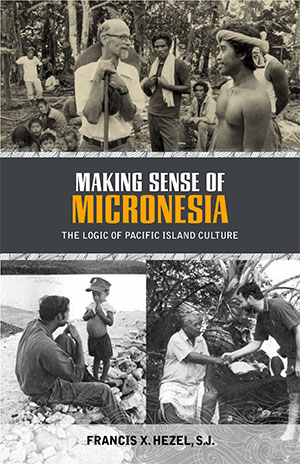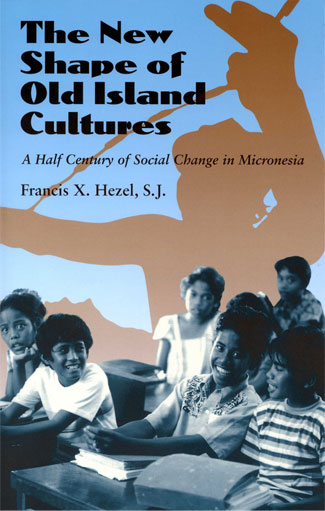Making Sense of Micronesia: The Logic of Pacific Island Culture

Why are islanders so lavishly generous with food and material possessions but so guarded with information? Why do these people, unfailingly polite for the most part, laugh openly when others embarrass themselves? What does a smile mean to an islander? What might a sudden lapse into silence signify? These questions are common in encounters with an unfamiliar Pacific Island culture. Making Sense of Micronesia is intended for westerners who find themselves in contact with Micronesians?as teachers, social workers, health-care providers, or simply as friends?and are puzzled by their island ways. It is for anyone struggling to make sense of cultural exchanges they don?t quite understand.
The author focuses on the guts of island culture: the importance of the social map, the tension between the individual and social identity, the ways in which wealth and knowledge are used, the huge importance of respect, emotional expression and its restraints, island ways of handling both conflict and intimacy, the real but indirect power of women. Far from a theoretical exposition, the book begins and ends with the real-life behavior of islanders. Each section of every chapter is introduced by a vignette that illustrates the theme discussed. The book attempts to explain island behavior, as curious as it may seem to outsiders at times, against the over-riding pattern of values and attitudes that have always guided island life.
Even as the author maps the cultural terrain of Micronesia, he identifies those areas where island logic and the demands of the modern world conflict: the ?dilemmas of development.? In some cases, changes are being made; in others, the very features of island culture that were highly functional in the past may remain so even today. Overall, he advocates restraint?in our judgments on island practices, in our assumption that many of these are dysfunctional, and in leading the charge for ?development? before understanding the broader context of the culture we are trying to convert.
Honolulu: University of Hawaii Press, 2013. 200 pp.
The New Shape of Old Island Cultures: A Half-Century of Social Change in Micronesia
 The years since World War II have brought unprecedented social change to Micronesia. Now, drawing on more than four decades of experience living and working in the region, Francis X. Hezel assesses the most striking changes to have swept over the islands in the past fifty years. His careful and comprehensive reading of Micronesian anthropology and history allows him to present insights into patterns of change touching the lives of not only Micronesians but people in other parts of the Pacific as well.
The years since World War II have brought unprecedented social change to Micronesia. Now, drawing on more than four decades of experience living and working in the region, Francis X. Hezel assesses the most striking changes to have swept over the islands in the past fifty years. His careful and comprehensive reading of Micronesian anthropology and history allows him to present insights into patterns of change touching the lives of not only Micronesians but people in other parts of the Pacific as well.
The broad range of topics covered include family structure, land, gender roles, cultural treatment of life events (birth, marriage, death), sexuality, political authority, and demography and migration. Hezel argues that the primary engine of social change in Micronesia has been the dramatic shift from subsistence fishing and gardening to salaried employment in a cash economy. He makes the case that this fundamental change has fragmented the extended family, changed the way land is viewed, revolutionized gender roles, and paved the way for an ethics of individualism.
Honolulu: University of Hawaii Press, 2001. 198 pp.2001
Strangers in Their Own Land: A Century of Colonial Rule in the Caroline and Marshall Islands
 “The tale [of Strangers in Their Own Land] is one of interplay between four sequential colonial regimes (Spain Germany, Japan, and the United States) and the diverse island cultures they governed. It is also a tale of relationships among islands whose inhabitants did not always see eye-to-eye and among individuals who fought private and public battles in those islands. Hezel conveys both the unity of purpose exerted by a colonial government and the subversion of that purpose by administrators, teachers, islands, and visitors…[The] history is thoroughly supported by archival materials, first-person testimonies, and secondary sources. Hezel acknowledges the power of the visual when he ends his book by describing the distinctive flags that now replace Spanish, German, Japanese, and American symbols of rule. the scene epitomizes a theme of the book: global political and economic forces, whether colonial or post-colonial, cannot erode the distinctiveness each island claims.”
“The tale [of Strangers in Their Own Land] is one of interplay between four sequential colonial regimes (Spain Germany, Japan, and the United States) and the diverse island cultures they governed. It is also a tale of relationships among islands whose inhabitants did not always see eye-to-eye and among individuals who fought private and public battles in those islands. Hezel conveys both the unity of purpose exerted by a colonial government and the subversion of that purpose by administrators, teachers, islands, and visitors…[The] history is thoroughly supported by archival materials, first-person testimonies, and secondary sources. Hezel acknowledges the power of the visual when he ends his book by describing the distinctive flags that now replace Spanish, German, Japanese, and American symbols of rule. the scene epitomizes a theme of the book: global political and economic forces, whether colonial or post-colonial, cannot erode the distinctiveness each island claims.”
“Hezel has written an authoritative and engaging narrative of [a] succession of colonial regimes, drawing upon a broad range of published and archival sources as well as his own considerable knowledge of the region…Hezel demonstrates a fine understanding of the complicated relations between administrators, missionaries, traders, chiefs and commoners in a wide range of social and historical settings.”
Honolulu: University of Hawaii Press, 1995. 467 pp.1995
The First Taint of Civilization: A History of the Caroline and Marshall Islands in Pre-Colonial Days, 1521-1885
 “Hezel has written a lively, even lusty history of island and Western civilizations coming into contact, and neither being the same afterwards. In Hezel’s work a colorful cast parades before the reader: the crafty Palauan Ibedul who used a succession of Western ship captains for his own ends; the opportunistic seafarer Andrew Cheyne whose dreams of a Pacific trading empire dissipated in the tropical heat; the Hawaiian Protestant missionary Hezekiah Aea who for the first time taught Marshallese to read in their own language; the rogue Bully Hayes who professed to finding God while keeping numerous mistresses. Hezel is an accomplished writer who manages to portray history as it should be (and as relatively few historians seem able to do): as the rich story of the human condition.”
“Hezel has written a lively, even lusty history of island and Western civilizations coming into contact, and neither being the same afterwards. In Hezel’s work a colorful cast parades before the reader: the crafty Palauan Ibedul who used a succession of Western ship captains for his own ends; the opportunistic seafarer Andrew Cheyne whose dreams of a Pacific trading empire dissipated in the tropical heat; the Hawaiian Protestant missionary Hezekiah Aea who for the first time taught Marshallese to read in their own language; the rogue Bully Hayes who professed to finding God while keeping numerous mistresses. Hezel is an accomplished writer who manages to portray history as it should be (and as relatively few historians seem able to do): as the rich story of the human condition.”
Honolulu: University of Hawaii Press, 1983. 365 pp.1983
Micronesia: Winds of Change. A Book of Reading on the History of Micronesia
 “The tale [of Strangers in Their Own Land] is one of interplay between four sequential colonial regimes (Spain Germany, Japan, and the United States) and the diverse island cultures they governed. It is also a tale of relationships among islands whose inhabitants did not always see eye-to-eye and among individuals who fought private and public battles in those islands. Hezel conveys both the unity of purpose exerted by a colonial government and the subversion of that purpose by administrators, teachers, islands, and visitors…[The] history is thoroughly supported by archival materials, first-person testimonies, and secondary sources. Hezel acknowledges the power of the visual when he ends his book by describing the distinctive flags that now replace Spanish, German, Japanese, and American symbols of rule. the scene epitomizes a theme of the book: global political and economic forces, whether colonial or post-colonial, cannot erode the distinctiveness each island claims.” -Judith Modell, American Historical Review
“The tale [of Strangers in Their Own Land] is one of interplay between four sequential colonial regimes (Spain Germany, Japan, and the United States) and the diverse island cultures they governed. It is also a tale of relationships among islands whose inhabitants did not always see eye-to-eye and among individuals who fought private and public battles in those islands. Hezel conveys both the unity of purpose exerted by a colonial government and the subversion of that purpose by administrators, teachers, islands, and visitors…[The] history is thoroughly supported by archival materials, first-person testimonies, and secondary sources. Hezel acknowledges the power of the visual when he ends his book by describing the distinctive flags that now replace Spanish, German, Japanese, and American symbols of rule. the scene epitomizes a theme of the book: global political and economic forces, whether colonial or post-colonial, cannot erode the distinctiveness each island claims.” -Judith Modell, American Historical Review
“Hezel has written an authoritative and engaging narrative of [a] succession of colonial regimes, drawing upon a broad range of published and archival sources as well as his own considerable knowledge of the region…Hezel demonstrates a fine understanding of the complicated relations between administrators, missionaries, traders, chiefs and commoners in a wide range of social and historical settings.” -John Barker, Pacific Affairs
